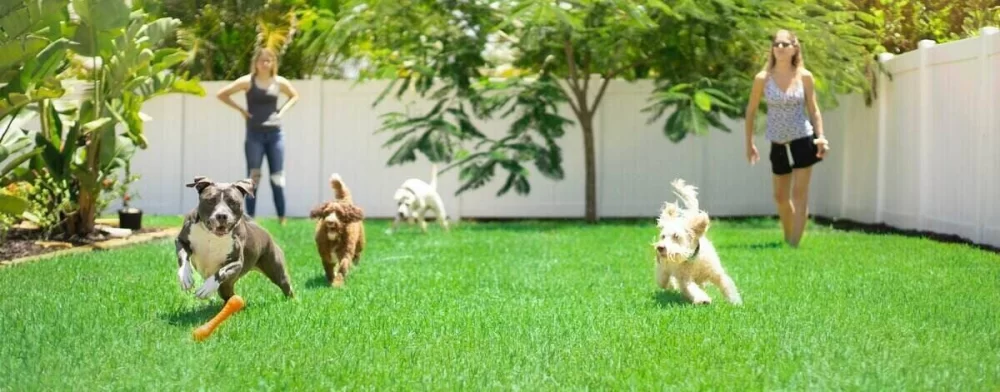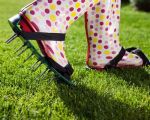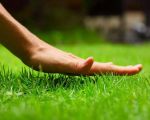
- Why Pet-Friendly Lawns Are Essential
- Choosing the Right Grass Types for Pets
- Lawn Preparation and Soil Care
- Maintenance Tips to Keep Your Lawn Pet-Friendly
- Practical Examples and Real-Life Stories
- Professional Lawn Care Support for Pet Owners
1. Why Pet-Friendly Lawns Are Essential
Creating a pet-friendly lawn is not just about aesthetics; it’s about ensuring that your outdoor space is safe, durable, and enjoyable for both your pets and family. Pets, especially dogs, can be tough on lawns — their running, digging, and occasional accidents often cause patchy or damaged grass. A lawn designed with pets in mind improves the health of your grass while giving your furry friends a safe place to play.
Pet-friendly lawns reduce the risk of exposure to harmful chemicals often found in traditional lawn care, promoting your pet’s well-being. Furthermore, a lawn that withstands pet activity saves homeowners both time and money in maintenance. This approach also increases your home's curb appeal and overall outdoor comfort, making your yard a welcoming environment for everyone.
2. Choosing the Right Grass Types for Pets
The foundation of any pet-friendly lawn starts with selecting the right grass type. Not all grasses are created equal when it comes to durability and safety for pets. For example, Kentucky bluegrass is resilient and recovers well from wear, making it a popular choice in cooler climates. Fescues offer a dense growth pattern and tolerance to shade, which can be ideal for yards with less sunlight.
In warmer regions, Bermuda grass is known for its toughness and rapid growth, able to withstand heavy foot traffic from active dogs. Zoysia grass is another excellent option because it forms a thick mat that resists damage and recovers quickly. Avoid delicate grasses like ryegrass if your pets are very active, as they can wear out quickly.
Besides durability, consider the grass's texture and safety — some grasses have rough blades that may irritate sensitive paws. Selecting non-toxic, pet-safe grass varieties ensures your lawn is both comfortable and safe.
2.1 Understanding Grass Growth and Repair
Different grasses grow and repair at varying speeds. Cool-season grasses like Kentucky bluegrass have strong regenerative capabilities, healing damage caused by digging or rough play. Warm-season grasses like Bermuda thrive in heat but may go dormant in cooler months, so seasonal care adjustments are necessary.
2.2 Pet-Resistant Alternatives to Grass
For extremely active pets or areas prone to heavy wear, combining natural grass with pet-resistant ground covers or mulch can extend the lawn’s lifespan. Options like clover or low-growing sedums can provide softness and durability while being gentle on paws.
3. Lawn Preparation and Soil Care
A healthy lawn begins with proper soil preparation. Pets can compact soil, making it harder for grass roots to grow and absorb nutrients. Aerating the soil before planting improves air, water, and nutrient flow. Incorporate organic compost or pet-safe soil conditioners to enhance soil health.
Additionally, ensure proper drainage, as muddy spots are a common problem in pet areas and can quickly degrade your lawn’s condition. Raised or sloped sections can help keep water moving and reduce the risk of muddy patches.
3.1 Establishing a Strong Root System
Deep-rooted grasses survive pet activity better because they draw nutrients from deeper layers and recover faster from surface damage. Regular watering encourages roots to grow downward rather than just at the surface, improving lawn resilience.
3.2 Protecting New Grass from Pet Damage
When establishing a new lawn, limit pet access until the grass is fully rooted. Temporary fencing or designated pet zones can help protect young grass. This patience will pay off with a lawn that better withstands future pet activity.
4. Maintenance Tips to Keep Your Lawn Pet-Friendly
Once your pet-friendly lawn is established, maintenance becomes crucial. Regular mowing keeps grass healthy and less prone to disease. Use a mower that doesn’t scalp the grass to maintain a protective blade length. Avoid chemical pesticides and fertilizers that can harm pets; instead, opt for organic or pet-safe products.
Addressing pet urine spots is another key challenge. Diluting these areas with water soon after your pet relieves itself can prevent yellow or dead patches. For heavy-traffic zones, consider adding stepping stones or mulch to reduce wear.
4.1 Repairing Pet Damage Quickly
Patch worn or bare spots promptly by reseeding or laying sod. Keeping extra seed on hand allows you to act immediately when you notice damage. Over time, these small repairs will maintain the overall lawn quality.
4.2 Seasonal Care Adjustments
In colder climates, winter dormancy means less damage but also less recovery. Plan spring reseeding and soil amendments to help your lawn bounce back. In summer, prioritize watering and shade to protect grass from heat stress, which pets can unintentionally accelerate by frequent activity.
5. Practical Examples and Real-Life Stories
Take the case of Sarah, a dog owner from Oregon, who struggled with brown patches caused by her two energetic labs. After switching to a mix of Kentucky bluegrass and fine fescue, aerating her soil, and watering affected spots immediately, her lawn transformed within a season. Sarah’s story highlights how thoughtful grass selection and maintenance tailored for pets can rejuvenate a tired lawn.
Another inspiring example comes from a Texas family who replaced part of their lawn with durable Bermuda grass and installed a gravel path to channel their dog’s walking route. Their yard remains green and intact even with heavy daily use, proving that design adaptations can go hand-in-hand with grass care.
5.1 Lessons from Pet-Friendly Lawn Success
These stories underscore the importance of patience and consistent care. A pet-friendly lawn isn’t an overnight achievement but a rewarding process that combines the right grass, soil preparation, and ongoing maintenance.
6. Professional Lawn Care Support for Pet Owners
For pet owners seeking expert advice or tailored services, Lawn Care Services offers specialized solutions designed to keep your lawn healthy and pet-safe. From customized grass seed blends to organic lawn treatments and soil health assessments, professional support can save you time and enhance results.
Whether you’re starting from scratch or looking to improve an existing lawn, consulting with experts ensures you choose the best strategies for your climate, pet activity level, and yard size. This professional guidance often proves invaluable in achieving a truly pet-friendly lawn that lasts.








